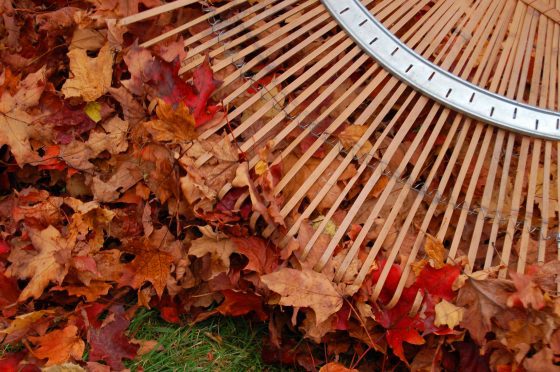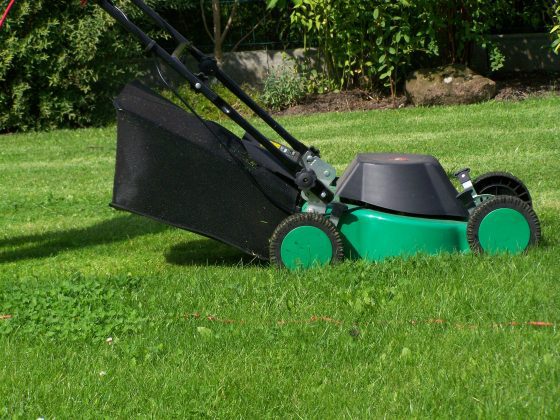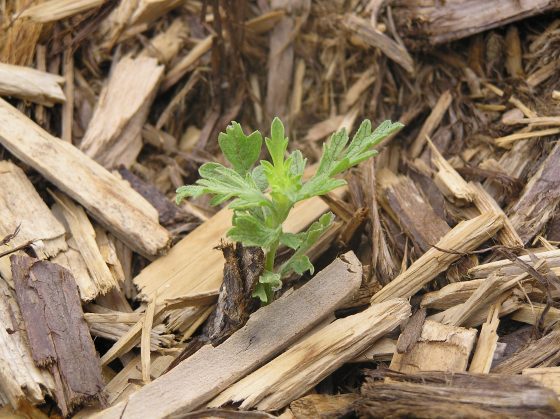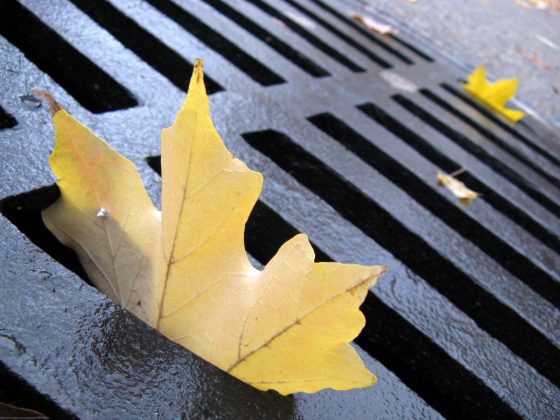What is Eco-Friendly Landscaping?

Expansive lawns, colorful exotic plants, perfectly pruned flowerbeds and ever-flowing water features can all contribute to beautiful landscapes that are aesthetically pleasing, relaxing and inviting.
Unfortunately, these landscape features can also contribute to air and water pollution, overuse of chemical pesticides and fertilizers, flooding, increased waste, and increased consumption of fossil fuels and water.
People enjoy being in pleasing environments, which is completely understandable, particularly with empirical research showing that we are affected by our surroundings in terms of mood, stress and energy levels, as well as overall health and wellness.
There is no doubt that natural, outdoor settings with plants, flowers, trees and fresh air are good for the body, mind and soul.
Most of us are drawn to nature and enjoy spending time outdoors, which is one reason we surround our homes with well-manicured yards and lush gardens.
However, while we are drawn to natural settings, our tendency is to clear natural habitats of native plants and trees that provide protection from the elements in order to build housing developments that we then surround with water-hogging grass lawns, intricate landscape designs that require gas-powered or electric landscaping equipment to maintain, exotic plants and other non-native features.
Plus, another reason we fill our yards with expensive, exotic plants or over-sized natural grass lawns is to keep up with – or outdo – our neighbors when it comes to landscaping prowess, which usually results in the use of even more fertilizers, herbicides, pesticides and equipment.
Too many of us have grown accustomed to the conventional landscaping most of us grew up with and do not think twice about the water required to keep a natural grass lawn alive in the desert in summer or the affects of invasive, non-native plants on local ecosystems.
This type of disregard contributes to drought conditions, flooding, pollution and the loss of wildlife habitat.
The good news is that our awareness of the unnecessary negative impact our lifestyles have on the environment has increased, which has led to many individuals and businesses committing to more environmentally responsible practices.
One way many people are reducing their carbon footprints, conserving water and reducing waste is by creating visually appealing, functional, welcoming outdoor living spaces that require less water, fewer fossil fuels and less overall maintenance.
As an added benefit, those who choose eco-friendly landscaping – which is also referred to as native landscaping, xeriscaping, natural landscaping, green landscaping or beneficial landscaping – also can save significant time and money by reducing their yard’s maintenance requirements, lowering their monthly utility bills, and needing fewer landscaping products and tools.
What Makes Landscaping Eco Friendly?
Green landscaping conserves water, uses less energy, requires fewer chemical-laden products and reduces waste.
Earth-friendly landscaping is also used to reduce the harmful impact of invasive species on ecosystem biodiversity by using native plant species and protects waterways by reducing toxic substances and debris entering drainage systems.
Green landscaping, if the homeowner chooses, can also provide food or habitat for local wildlife, which helps compensate for the natural habitat that was cleared to build the home.
In terms of reducing flood risk, providing habitat for local wildlife, reducing waste and decreasing the amount of toxins that enter the water supply through drainage systems, it is most beneficial when all residents in a neighborhood adhere to natural landscaping practices, but is important to remember that individual business owners and homeowners can and do make a difference when they choose eco-friendly landscaping.
Why Choose Green Landscaping?
We have already mentioned that earth-friendly landscaping can save you time and money, but if that is not enough to convince you to consider eco-friendly options for your residential or commercial property, below are ten more reasons to consider going green.

10 Reasons to Choose Eco-Friendly Landscaping
1. According to the Environmental Protection Agency (EPA), residential pesticide use is about 20 times higher per acre than farm use.
2. The EPA also reports that about 20% of municipal solid waste is yard waste and that most of that comes from clippings from natural grass lawns. This waste often finds its way to landfills.
3. Chemical-laden pesticides, herbicides and fertilizers can be toxic to your family and pets.
4. WaterSense, an EPA Partnership Program, states that approximately 30% of residential water use is used outside, including such activities as rinsing down driveways, watering lawns, maintaining your swimming pool and washing your car. It is estimated that nearly 1/3 of this residential water use (more than 7 billion gallons every day) is dedicated to irrigating landscape.
5. More than 5% of urban air pollution comes from gas-powered equipment used to maintain landscape, such as leaf blowers, lawnmowers and trimmers (as reported by the EPA).
6. Water runoff from irrigating landscape and using water to clean driveways, patios, walkways and sidewalks carries debris and pollutants to local bodies of water.
7. It is not just the health of the Earth that is compromised by clearing native habitats and replacing them with exotic plants and large lawns; the health of humans and animals is also negatively impacted by traditional landscaping and the maintenance required.
8. Planting deciduous trees that block the sun in the summer and allow the sun to filter through their empty branches in the winter can significantly reduce the cost of controlling the climate in your home, including saving up to 20% on cooling costs in warmer months. You can save even more in cooling costs with additional energy-efficient landscaping choices.
9. The US Department of Energy points out that homeowners can save up to 30% on heating their homes simply by making appropriate landscaping choices with energy efficiency in mind.
10. Neighborhoods are more peaceful when the need for motorized equipment is reduced and safer when flood risk is reduced by using beneficial landscaping.
The planet, wildlife, people and pets all benefit when we choose eco-friendly landscaping.
Considering that it also can result in significant monetary savings and less time spent maintaining our yards, green landscaping is an easy choice when designing new landscaping or replacing existing features.
How to Make Your Landscaping Eco-Friendly
Going green by saving water and reducing pesticides in your yard is easier than you might think.
Here is a long list of steps you can take towards eco-friendly landscaping for your residential or commercial property.
15 Ways to Save Water
Conserving water through good landscaping choices is easy and can save you money every month.
Here are fifteen ways you can save water simply by making a few changes to your landscaping:
1. Limit the space dedicated to natural grass lawns or avoid a conventional lawn completely by installing water-saving artificial turf instead.
2. Include abundant patio space in your design. Expansive patios provide ample space for outdoor living, entertaining and family activities, and can be simply swept clean.
3. Select native plants that thrive in your area and require little water.
4. Plant trees to provide shade, which can reduce water evaporation.
5. Get to know your yard, such as which areas get the most sun and where your yard naturally drains, before planting.
6. Install an automatic irrigation system with a timer and rain sensor.
7. Request an audit of your current irrigation system so that your local water company can make sure it is in good repair and to get suggestions on ways you can lower your water consumption even more.
8. Water grass areas early in the morning to minimize evaporation.
9. Landscape in zones to keep plants with similar water requirements together. This will help you avoid over-watering.
10. Take up space with attractive features that require no water, such as rock gardens, benches, artificial turf putting greens and gazebos.
11. Use mulch, gravel, compost, wood chips or bark around plants to help promote water retention in the soil.
12. Increase your home’s curb appeal by hiring a landscape designer to renovate your yard with water-saving xeriscape.
13. Sweep dirt and debris from driveways, walkways and patios instead of rinsing them down with water.
14. Use soil moisture sensors to better determine when plants, shrubs and trees need to be watered.
15. Aerate soil to allow water to more easily flow into the ground and reduce runoff.

5 Ways to Reduce the Need for Chemicals in Your Landscape Maintenance
Chemical pesticides and fertilizers can affect the health of your family, your pets and the planet.
Here are five simple steps to reduce the need for toxic chemicals in your yard.
1. Reduce the need for fertilizer by choosing an artificial grass lawn, using compost around plants or leaving the grass clippings on your natural grass lawn to allow them to decompose.
2. Reduce the need for weed-killing herbicides by using ground covers that limit weed growth, opting for weed-free synthetic turf or using natural solutions, such as distilled white vinegar.
3. Limit the need for pesticides by choosing plants that naturally repel pests, such as pennyroyal, marigolds, mint, rosemary or thyme.
4. Reduce the need for pesticides by introducing predatory insects into the environment, such as using ladybugs to save your garden from an aphid outbreak.
5. If you must use commercial fertilizers or pesticides, opt for organic, chemical-free options that use only natural ingredients.
5 Ways to Reduce Yard Waste
1. Easily reduce yard waste and reduce your need for fertilizer by leaving lawn clippings to decompose on your lawn.
2. Rent a wood chipper to turn tree branches or shrub clippings into wood chips that can be used around plants as a ground cover.
3. Reduce the amount of weeds in your waste barrel by limiting weed growth through the use of ground covers or natural products, like distilled white vinegar.
4. Start a backyard compost pile where you can deposit fallen leaves after raking.
5. Use branches from trimming trees as firewood, kindling, garden stakes or to create natural décor.
5 Ways to Be a Better Neighbor with Greener Landscaping Practices
Most of us want to be good neighbors and live in a tranquil, safe neighborhood.
You can do your part by taking these five steps towards becoming a better neighbor with greener landscaping practices.
1. Reduce noise pollution in your neighborhood by choosing eco-friendly landscaping that does not require the use of gas-powered or electric equipment, such as a lawnmower or trimmer.
2. Reduce harmful runoff by limiting the use of chemical landscaping products, properly watering your lawn, and limiting your water use when cleaning patios and other hardscape features.
3. Reduce the chance of flooding your neighbor’s yard by making sure your yard has proper drainage and that your landscaping prevents erosion.
4. Share the climate-control love by strategically planting trees to help you save energy costs without causing increased energy needs for your neighbors.
5. Avoid invasive species that may creep into your neighbors’ yards.
Final Thoughts…
Many of the steps people take towards living a greener life, such as installing solar panels, buying only organic produce or switching to tankless water heaters, initially cost more, which is likely one reason people often assume eco-friendly landscape will be an expensive option.
While some water-saving or green landscaping options involve an initial investment, such as paving stone patios or artificial grass, many of the steps listed above cost nothing and result in ongoing savings that you can enjoy for years to come.
Whether you choose to create a backyard oasis with only drought-resistant plants, ground covers that do not require water and a synthetic lawn, or just want to lower your energy and water use a little by downsizing your current natural grass lawn, or planting one or two native trees to provide summer shade, every step towards eco-friendly landscaping can benefit your family and the environment.
Creating a natural backyard retreat with native plants or a welcoming common area in an apartment complex with ornamental grasses and paving stone walkways is a great way to increase curb appeal, save money and do your part to lower your environmental impact.
If you are concerned about the health of your family, the planet, your pets or local wildlife, go green in your landscaping to reduce chemical exposure, lower your consumption of natural resources and provide a functional, attractive outdoor living space.
Photo Credits (in order): stock.xchng, juliaf; stock.xchng, 13dede; stock.xchng, QualityC; stock.xchng, thegnome54
